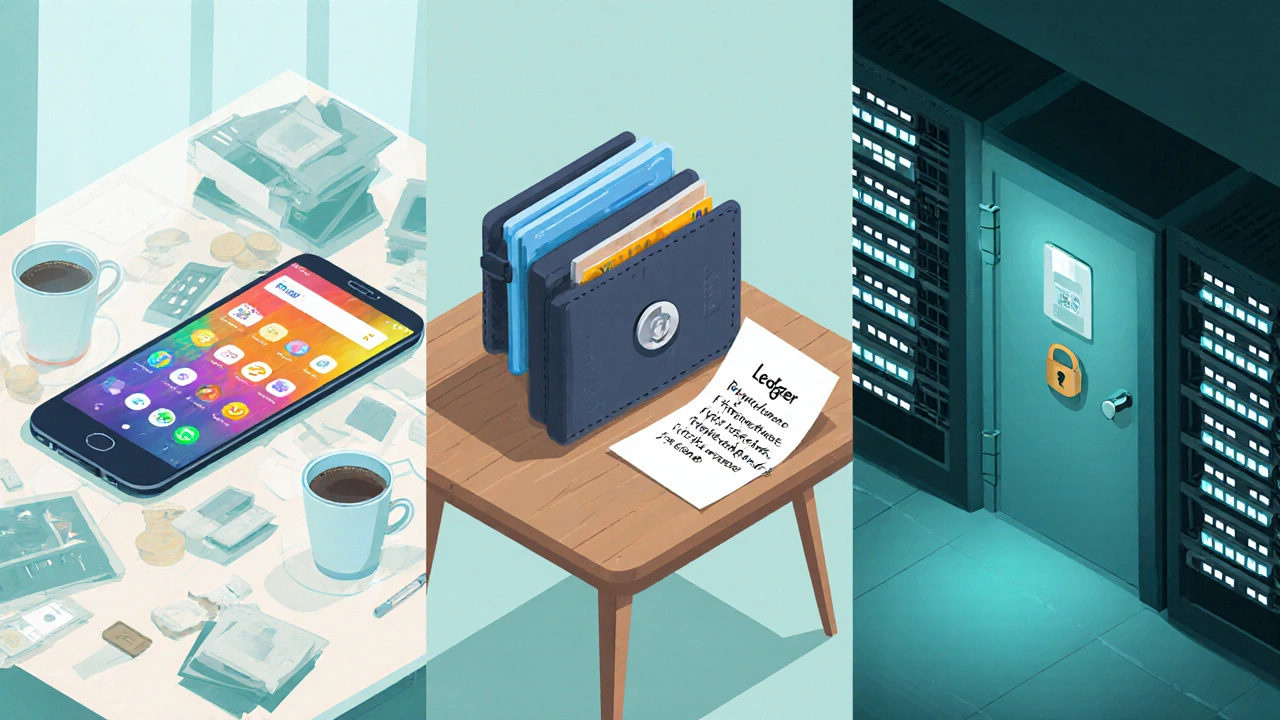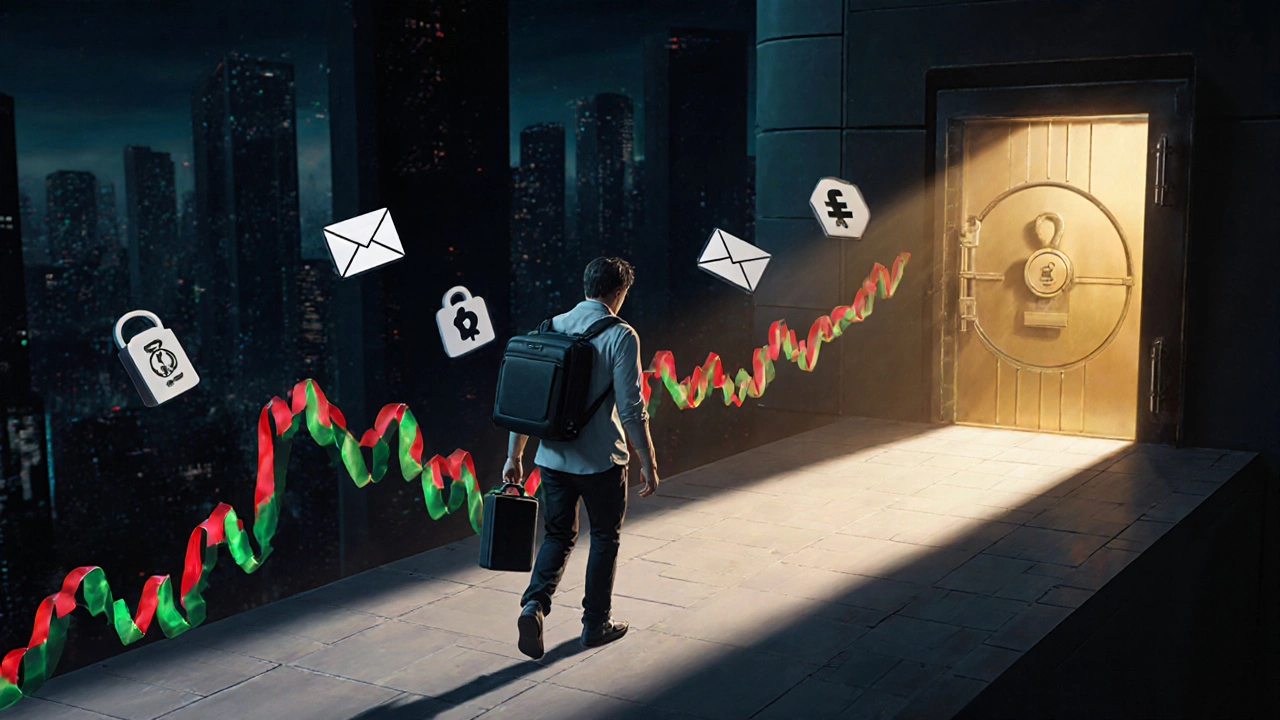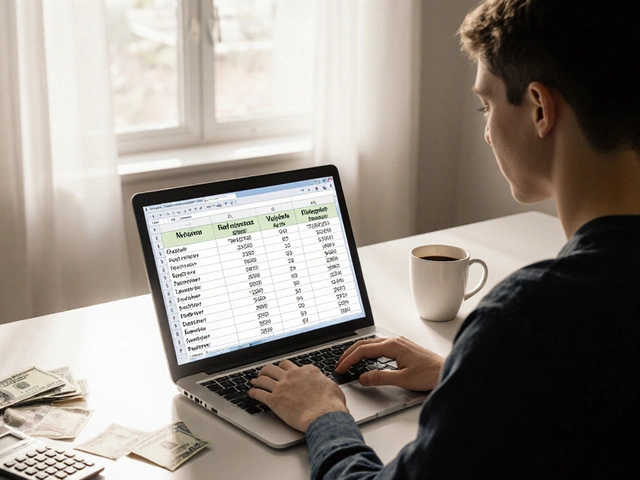
Crypto Wallet Security Calculator
Key Takeaways
- Crypto’s security depends on technology, user practices, and regulation.
- Common risks include exchange hacks, private‑key loss, and extreme price swings.
- Using hardware wallets, 2FA, and reputable platforms dramatically reduces danger.
- Regulatory oversight varies by country; some jurisdictions offer strong consumer protections.
- Compared with traditional banks, crypto offers both higher potential reward and higher risk.
What "cryptocurrency safety" really means
When people ask cryptocurrency is a digital asset secured by cryptographic algorithms, they’re usually worried about two things: losing their money or being scammed. cryptocurrency safety covers technical safeguards (like encryption), personal habits (how you store keys), and the legal environment (rules that protect investors).
Major coins like Bitcoin and Ethereum each rely on the same blockchain principles but differ in transaction speed and smart‑contract capabilities.
How the underlying technology protects you
The backbone of every crypto coin is the blockchain a distributed ledger where every transaction is verified by a network of computers. Because the ledger is replicated across thousands of nodes, no single party can rewrite history without being noticed. This decentralisation is what makes “double‑spending” virtually impossible.
However, decentralisation does not guarantee personal safety. The network can be secure, but the user’s interface-wallet apps, browsers, or exchange platforms-can still be vulnerable.
Where most crypto losses happen
According to a 2024 industry report, about 68% of crypto‑related thefts stem from three sources:
- crypto exchange hacks - attackers breach the platform’s servers and steal users’ balances.
- private‑key loss - users misplace or delete the secret phrase that unlocks their wallet.
- Phishing and social‑engineering scams - fraudsters trick victims into sending coins to a malicious address.
Even big names like Binance and Coinbase have suffered breaches, reminding us that no service is completely immune.

Choosing a safe place to store your coins
There are three main storage categories:
- Hot wallets - software apps on phones or browsers. Convenient for daily trading but exposed to malware.
- Cold wallets - hardware devices that keep private keys offline. Examples include Ledger and Trezor.
- Custodial wallets - third‑party services that hold keys for you, similar to a bank. Security depends on the provider’s internal controls.
For most newcomers, a combination works best: keep a small amount in a reputable hot wallet for regular use, and lock the bulk in a hardware wallet a physical device that stores private keys offline.
Practical steps to boost your crypto security
Follow this checklist before you buy or move any coin:
- Enable two‑factor authentication (2FA) on every exchange and email account.
- Use a hardware wallet for any amount larger than a few hundred dollars.
- Write down your seed phrase on paper, store it in a fire‑proof safe, and never share it digitally.
- Verify URLs and SSL certificates before logging into an exchange - phishing sites often mimic the real page.
- Keep your operating system and apps up to date to patch known vulnerabilities.
- Consider a multi‑signature wallet for added approval steps on large withdrawals.
Regulatory landscape and its impact on safety
Regulation differs wildly across the globe. In the United States, the SEC treats many tokens as securities, requiring disclosures that add a layer of investor protection. The EU’s MiCA framework, effective from 2024, mandates licensing for crypto‑service providers and imposes capital‑reserve rules.
In jurisdictions with strong regulation a legal framework that sets standards for licensing, reporting, and consumer protection, exchanges must adhere to AML/KYC rules that reduce fraud.
Countries with lax oversight, such as some offshore jurisdictions, often host exchanges with weaker security standards. Conversely, nations like Japan and Singapore enforce stringent AML/KYC checks, which can deter fraudsters.
Comparing crypto risk with traditional finance
| Aspect | Cryptocurrency | Banking / Stock market |
|---|---|---|
| Custody | Self‑custody or third‑party exchanges | Bank‑insured accounts (FDIC up to $250k) |
| Regulation | Varies; often lighter | Extensive federal oversight |
| Fraud risk | High - phishing, hack, rug pulls | Moderate - fraud but with consumer recourse |
| Price volatility | Extreme (daily swings >10%) | Low to moderate (typically <2% daily) |
| Recovery options | Usually none if private key lost | Account recovery and dispute processes |
The table shows that while crypto offers unique benefits-borderless transfers, programmable money-it also carries risks that banks simply don’t have. Knowing where the gaps lie helps you decide how much exposure feels comfortable.

Real‑world examples of security breaches
In 2022, the decentralized exchange Terra suffered a flash‑loan attack that drained over $40million in stablecoins. The exploit wasn’t a flaw in blockchain math but a vulnerability in the smart‑contract code.
Last year, a popular phishing campaign targeted Bitcoin holders by sending fake “wallet recovery” emails. Victims who entered their seed phrases lost an average of $5,400 each.
These stories illustrate that threats can arise from both sophisticated hackers and simple human error.
Is crypto safe enough for you?
The answer isn’t black‑and‑white. If you treat crypto like cash-store it in a secure vault, keep backups, and only use reputable services-your risk drops dramatically. If you chase high‑yield DeFi projects without understanding the code, you’re walking into a minefield.
Think of safety as a spectrum: at one end, you have a hardware‑wallet‑only strategy that mirrors a safety‑deposit box; at the other end, you have an unregulated exchange with no 2FA. Position yourself where your comfort level matches the amount you’re willing to lose.
Bottom line
Cryptocurrency can be safe, but safety is largely in your hands. Strong cryptographic foundations protect the network, yet human factors-key management, platform choice, and awareness of scams-determine whether your personal stash stays intact.
Stay informed, use the right tools, and keep a healthy skepticism about “guaranteed returns.” With those habits, you’ll enjoy the upside of digital money while keeping the downside under control.
Frequently Asked Questions
Can I lose my crypto if an exchange gets hacked?
Yes. If the exchange holds your private keys, a successful breach can result in the loss of any funds stored there. To protect yourself, withdraw large balances to a personal wallet-preferably a hardware device-after each trade.
What’s the safest way to store Bitcoin?
Using a hardware wallet like Ledger or Trezor, combined with an offline, written seed phrase stored in a fire‑proof safe, is currently the most secure method. Avoid keeping significant amounts on hot wallets or exchange accounts.
Are crypto regulations improving safety?
Regulations such as the EU’s MiCA and U.S. SEC guidelines create licensing requirements, capital reserves, and disclosure rules for service providers. These measures increase transparency and give users legal recourse, but they don’t eliminate technical risks.
How does a hardware wallet prevent hacks?
A hardware wallet stores private keys in an isolated chip that never connects to the internet. Transactions are signed inside the device, so even if your computer is infected with malware, the keys remain unreachable.
What should I do if I suspect a phishing email?
Never click links or download attachments. Verify the sender’s address, check the website’s SSL certificate by typing the URL manually, and contact the platform’s official support channel to confirm the request.





Write a comment